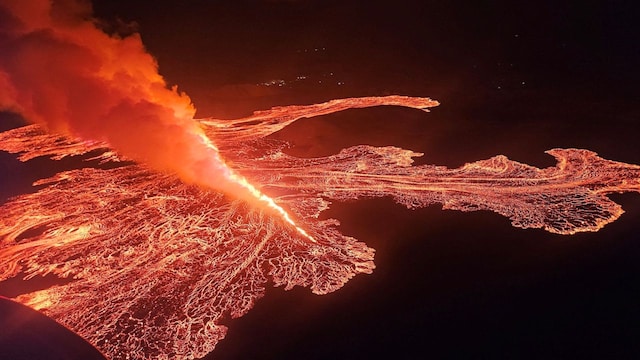
 1 / 7
1 / 7Iceland's Reykjanes Peninsula, dormant for about 800 years, has been a hotspot of volcanic activity since 2021, with repeated eruptions reshaping the region. On Wednesday (November 20) night, the peninsula witnessed its seventh eruption since December and the tenth in the past three years. (Image: Reuters)
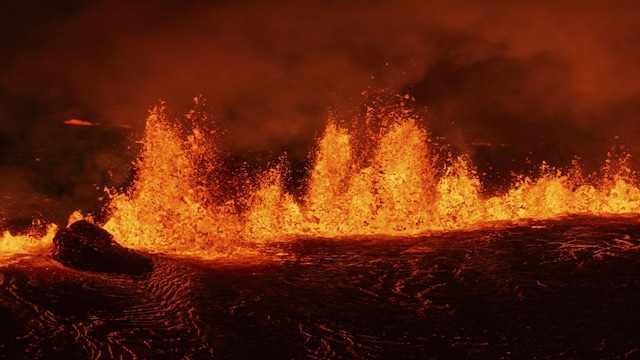
 2 / 7
2 / 7According to news reports, the latest eruption began abruptly at 11:14 PM, opening a 3-kilometer-long fissure. Experts have deemed this event smaller in scale compared to earlier eruptions, particularly those in May and August. Magnus Tumi Guðmundsson, a geophysics professor, noted during a inspection flight that this eruption appears less intense than previous ones. “In the big picture, this is a bit smaller than the last eruption, and the eruption that occurred in May,” the Associated Press (AP) quoted Guðmundsson. (Image: AP)
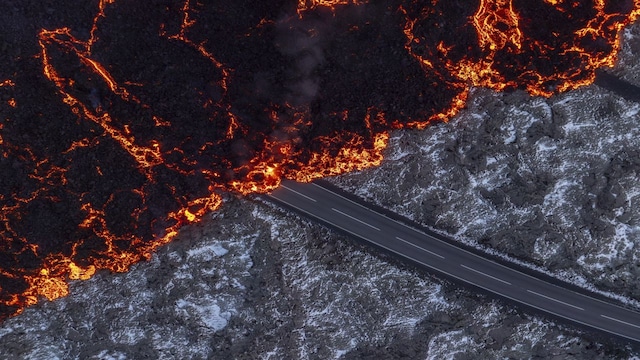
 3 / 7
3 / 7While the volcanic activity does not threaten air travel, authorities have issued warnings about gas emissions affecting parts of the peninsula, including Grindavík – a town with 3,800 residents located 50 kilometers southwest of Reykjavik. Approximately 50 homes and guests at the Blue Lagoon resort were evacuated as a precautionary measure. (Image: AP)
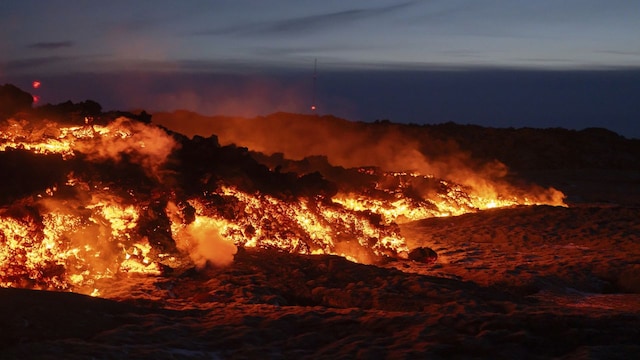
 4 / 7
4 / 7Grindavík, already vulnerable due to repeated eruptions, has faced significant damage to infrastructure and property over the years. Residents continue to grapple with the uncertainties of living in a geologically volatile zone. Despite assurances that the current fissure is unlikely to extend further, experts caution against ruling out future changes. (Image: AP)
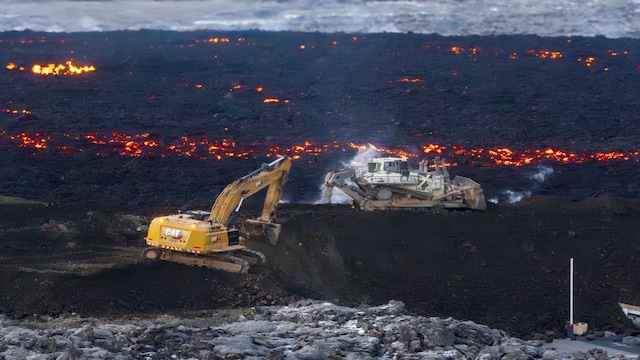
 5 / 7
5 / 7Iceland averages one volcanic eruption every four to five years, owing to its location above a North Atlantic volcanic hotspot. The 2010 Eyjafjallajökull eruption remains one of the most disruptive in recent history, causing global air traffic chaos for months due to widespread ash clouds. (Image: AP)
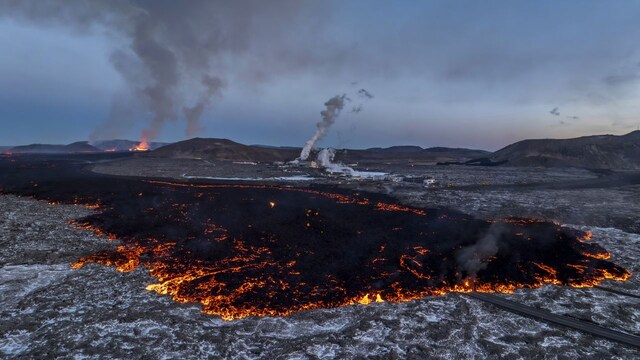
 6 / 7
6 / 7The Reykjanes Peninsula’s ongoing activity suggests that fissure eruptions may persist for centuries, a phenomenon that could redefine the region’s landscape and way of life. (Image: AP)
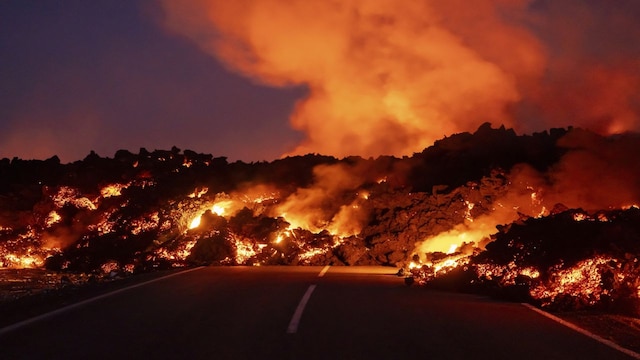
 7 / 7
7 / 7Timeline of recent eruptions: On March 19, 2021, a six-month eruption began in the Fagradalsfjall system after 40,000 preceding earthquakes, followed by a three-week eruption in the same area on August 3, 2022, prompting "code red" warnings. Smaller eruptions occurred in Litli Hrutur (July 10, 2023) and Svartsengi (December 18, 2023), with lava damaging pipelines and homes. A two-day eruption on January 14, 2024, reached Grindavik, followed by a one-day outburst on February 8 that disrupted heating supplies and closed the Blue Lagoon. On March 16, a 54-day eruption near Hagafell marked the second-longest since 2021, succeeded by a 24-day eruption on May 29, the most powerful in years. Sundhnukar crater erupted for 16 days on August 22, 2024, and the latest eruption on November 20, 2024, was brief and smaller in scale. (Image: AP)
